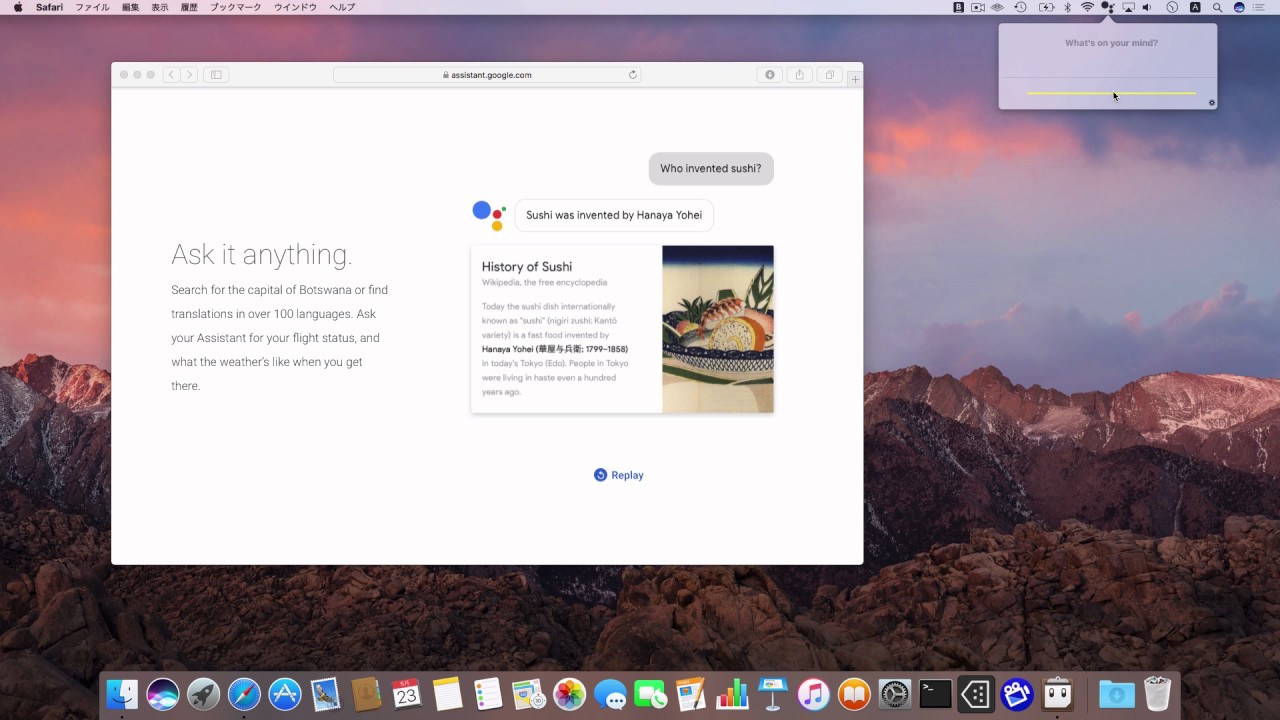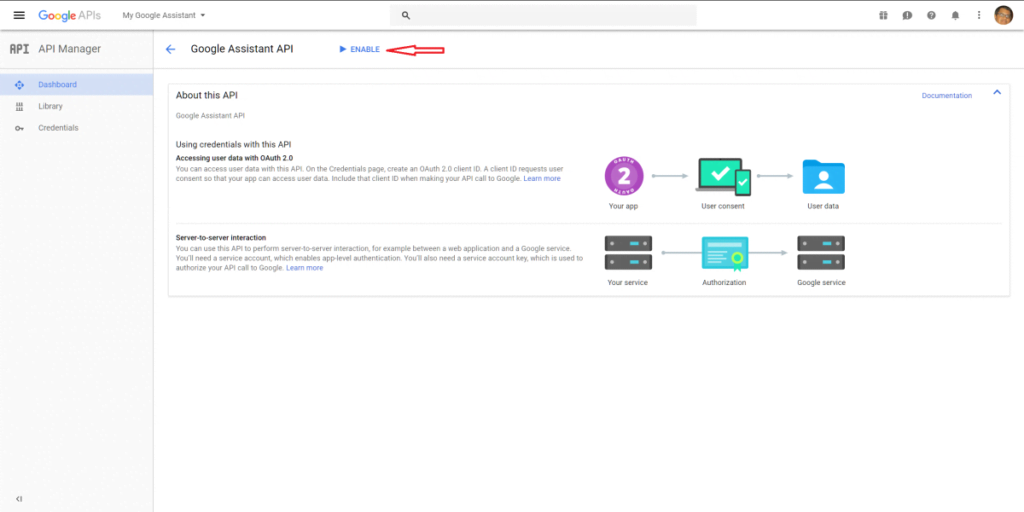

- #Google assistant for mac os how to#
- #Google assistant for mac os install#
- #Google assistant for mac os android#
- #Google assistant for mac os download#
Select that option and in the next window, click on ‘Create Credentials’. There you will see the option to ‘Enable’ Google Assistant. Now go to a separate tab in the browser and open ‘Google Assistant APIs’. Give a name to the project (preferably WinGoogleAsssistant) and note down the project ID for reference in the future. Once this is done, go to ‘Google Cloud Platform’ on your web browser and in the ‘Projects’ page, tap on ‘Create Project’. Keep the title as ‘GoogleAssistant’ with no spacing between the words. Next, go to Windows File Explorer and open the C: Drive or whichever is your PC’s main drive and create a new folder.
#Google assistant for mac os install#
You will have to install Python to use Google Assistant on Windows, macOS or Linux.Do search for the steps online in case you haven’t downloaded Python before.
#Google assistant for mac os how to#
How to Install Google Assistant in my PC Using Python

The process is a slightly complex one, so make sure you understand it completely before following it. Here is a guide on how to use Google Assistant on Windows, macOS, and Linux. What do you think about the Google Assistant for Mac? Let us know in the comments below.Google Assistant is not directly available for PC, but there is a trick to install it. Meanwhile, if you’re a developer, you can obtain your own OAuth client key and build the project by following the Build Instructions on the repository page. The developer of the app says that he’s currently hit the API quota limit, and is working with Google to extend the same. MacAssistant is currently in Beta, and a work in progress. And in our tests, it understood the context of specific commands, and even responded correctly to follow-up questions. The app uses data from your Google account to fetch relevant information based on your query. However, there is no text or graphic information displayed along with the voice over responses as of now. Assistant responds with the relevant answer as a voice over. You can say usual things that you’d ask Google Assistant on any Pixel phone, like “What’s the weather like today?”, “Do I have any meetings this week?” or “Remind me to get the laundry in 30 minutes.”, etc. With that done, your setup process is completed and you can start using the app. To begin with, you need to click on the Google Assistant icon on the menu bar and sign in to your Google account. The application sits on your menu bar, quite like Siri on macOS Sierra, and can respond to your voice commands.
#Google assistant for mac os download#
So, basically you just have to download the “.app” file on your Mac and run it.

Installing and using the app is quite easy, considering that the developer provides a pre-compiled version of the app as a direct download from the project’s repository. MacAssistant is a Mac app that brings Google Assistant to the macOS, using the Google Assistant SDK.
#Google assistant for mac os android#
It is a much improved version of Google Now, featuring a new look and feel.ĭuring its launch, Google had announced that the Assistant will be exclusive to Pixel phones only, although later, plans to roll it out to other Android Nougat and Marshmallow devices, was also shared.īeing a Mac user, you might be quite content with Siri running on macOS, but if you want to try out Google Assistant on your Mac for a change, there’s a live GitHub project that lets you do just that. Google Assistant created quite a buzz around the tech community a few months back, when it was launched as the personal assistant for Google Pixel phones.


 0 kommentar(er)
0 kommentar(er)
